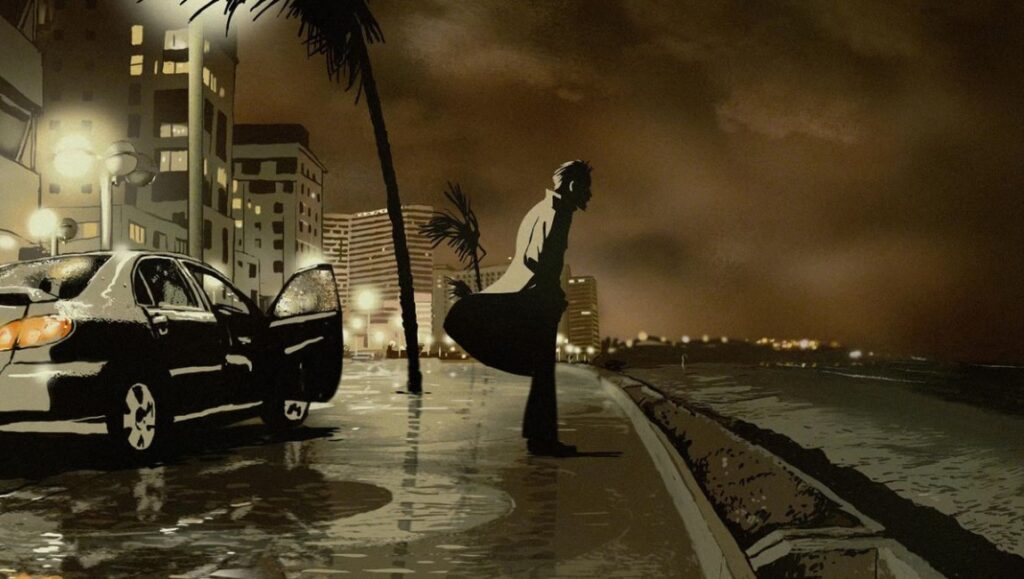Call Ari Folman’s Waltz With Bashir — a compendium of recollections and remembrances of an old man (Folman), concerning the massacre of Lebanese citizens in the Sabra and Shatila refugee camps — the distant, male cousin of last year’s also-animated feminine autobiography, Persepolis. Both focus on their heroine/hero’s conflict within their home country, during times of political upheaval and encroaching war. Marjane Satrapi’s Persepolis focused on a young Iranian girl growing up in the ’70s, facing changes both personal and national; in 1979, the Shah was defeated and the political environment changed greatly. In Waltz, Folman, using a documentarian approach, asks old friends from his military days to share their memories with him, since he finds himself haunted by one particular memory: the day of the massacre, in which he rises naked from the water, with comrades around him, and slowly walks into a deserted city as flares fall from a glowing yellow sky. Folman remembers not what happened after or before.
In Persepolis, black and white were the colors (or lack thereof) of choice, rendered with very little computer assist, and of a distinctly organic quality that’s lacking in most animated features these days. In contrast, Waltz prefers blue and yellow, primarily, and chooses to present itself to us using the rotoscoping technique that Richard Linklater famously employed in both Waking Life and A Scanner Darkly. Persepolis chose a narrative approach; Waltz feels more impressionistic and less structured. Persepolis beautifully melded reality and the imaginative flights of fancy of its young protagonist; the flash-back sequences in Waltz are defined and remain a separate entity from the story being told. There’s a sense that Folman’s film, which becomes almost exclusively flash-backs in its last reel, is a work unfinished, and poorly structured. This impressionistic quality doesn’t work as well here as it has in other war films (like The Thin Red Line), perhaps because Folman seems to play too many of his brutally violent sequences for their entertainment value, cutting them to upbeat Lebanese rock-pop. Still, Waltz undeniably raises some interesting questions about the nature of memory and how we can manipulate, or disassociate ourselves from certain events. It also contains some striking sequences– such as the titular waltz, where a gunman “dances an insane waltz”, firing a heavy machine gun into the air, amid torrents of enemy fire, in tribute to Bashir Gemayel.


Comments are closed.